The Best Acoustic Guitars 2024 - Between $100 & $1000

Author & Contributors
Alexander Briones
I have been writing about and researching music gear for many years, all while serving as a music director at my local church. I engage in guitar playing and singer-songwriter stints, in addition to mentoring young musicians and teaching guitar and bass.
The Best Acoustic Guitars Under $200
If you are interested in similarly priced options with pickups that let you plug them into an amplifier, then check out our separate recommendations for Acoustic-Electric Guitars Under $200.
If this is your price range and you would like more choices, we have another guide you should look after this on the best acoustic guitars under 200.
Yamaha F325D Dreadnought
Cons
- Lacks projection and harmonic overtones
Pros
- Reliable beater/starter guitar
- Playable action, neat fretwork
- Stable tuning
- Balanced tone
The F325D is an affordable dreadnought acoustic. To keep the price low, it features cost-effective materials including laminated spruce for the top, and sapele (low-cost alternative to mahogany) for the back and sides, all of which form its traditional dreadnought body.
For an acoustic guitar with entry-level tier specs, Yamaha got a lot of mileage out of the F325D. They did this by keeping build quality up, which made the F325D feel and sound like a proper instrument - having playable action, neat fretwork, stable tuning and good tone.
Speaking of tone, the F325D has a balanced voicing, not too bright and not too warm. And since none of the frequencies are overpowering the others, it works well with many different playing and musical styles. Given its basic configuration, it doesn't have as much in terms of projection and harmonic overtones. The upside to its laminate body is that it isn't as prone to damage, making it a suitable beater instrument.
It is joined with a nato neck that also complies with familiar specifications, with a 25.5" scale length and 1.6875" nut width.
If you're looking for an affordable dreadnought acoustic with good build quality, then this is for you.
Specs
- Body Shape: Dreadnought
- Top: Spruce
- Back and Sides: Sapele
- Finish: Gloss Natural
- Bridge: Walnut or Laurel
- Neck: Nato
- Fingerboard: Walnut or Laurel
- Fingerboard Radius: 15.75"
- Number of Frets: 20
- Frets to Body: 14
- Scale Length: 25.5”
- Nut Width: 1.6875"
| Website | Source | *Rating Value |
| YouTube | Acoustic Letter | 90/100 |
Demo
The Best Acoustic Guitars Under $300
For similarly priced options that come with pre-installed pickups, see our recommendations for Acoustic-Electric Guitars Under $300.
Yamaha FS800
Cons
- Lacks low end depth
Pros
- Great value solid spruce top guitar
- Good projection
- Warm tone with emphasis on mids and highs
- Student friendly neck feel
The FS800 brings Yamaha's tried and tested FG (Folk Guitar) formula into a concert profile acoustic, complete with a solid spruce top and traditional x-bracing support. And this solid top, together with Yamaha's penchant for build quality makes this guitar quite the steal at just a little over $200.
It is essentially a smaller bodied alternative to the FG800, with a more compact profile that alters the tone slightly, putting more emphasis on the mids and highs. This means that it doesn't have the low end depth of a dreadnought, but since it has a solid spruce top with scalloped x-bracing, it projects well and has harmonic overtones that make it sound full and rich.
Another important difference, although minor, is the shorter scale length which lessens the tension required for the strings to be in tune. This makes it a tad bit easier on the hands, while the curvy compact body makes it easier on the body and elbow to play. The neck profile is also a bit narrow, all of which add up to make the FS800 a comfortable instrument to learn on.
While Yamaha is known for consistent quality, don't expect the fretwork to be free from imperfections in this price range. Also, you'll get more out of this acoustic when you swap out the strings it comes with.
The Yamaha FS800 is easily one of the best value concert profile guitar in the market today, highly recommended.

Specs
- Body Shape: Concert
- Top: Solid Spruce
- Back and Sides: Nato/Okume
- Finish: Natural
- Bridge: Walnut
- Neck: Nato
- Neck Profile: Slim Tapered
- Fingerboard: Walnut
- Fingerboard Radius: 15.75"
- Number of Frets: 20
- Frets to Body: 14
- Scale Length: 25”
- Nut Width: 1.6875"
| Website | Source | *Rating Value |
| Acoustic Life | Tony Polecastro | 94/100 |
| YouTube | FNDGuitar | 95/100 |
Demo
Ibanez AW54
Cons
- Non-traditional sound
- Prone to dings and scratches
Pros
- Warm mid-focused tone
- Nice harmonic overtones
- Comfortable neck profile
- Solid Okoume top
Though Ibanez is known more for their electric guitars, the brand actually produces a lot of high quality and inventive acoustic instruments. A perfect example of this is Ibanez’s AW54, a member of their Artwood series, which features renewable tonewoods that allow for lower price tags.
The tonewood it uses is okoume, which is a lighter and more readily available wood compared to Mahogany. But it does have a similar “warm” tone, with stronger representation of the mid frequencies. It’s great if you’re looking to play folk, blues, country music, and other finger-style songs. Note that it has a solid okoume top, which adds to the guitar's projection and responsiveness.
Another interesting feature of this instrument is that Ibanez sells it with “Ibanez Advantage” bridge pins. These pins are designed to make string changes easier. The “bulb” of the pin is wider, making it easier to grab. The end is also tapered, which helps hold the strings in the correct position as seen in the image below.
Note that Okoume is also a bit softer than mahogany, so it can be prone to scratches and dings. The sonic difference can also be a deal breaker for those who prefer the brighter sound of traditional spruce plus mahogany tonewood combinations.
But if you're looking for a warm sounding solid-top acoustic guitar that's easy to play and easy on the pocket, then check out the Ibanez AW54.
Specs
- Body Shape: Dreadnought
- Top: Solid Okoume
- Back and Sides: Okoume
- Finish: Natural
- Bridge: Ovangkol
- Neck: Nyatoh
- Neck Profile: Slim (21mm at 1st Fret)
- Fingerboard: Ovangkol
- Fingerboard Radius: 15.75"
- Number of Frets: 20
- Frets to Body: 14
- Scale Length: 25.629"
- Nut Width: 1.6875"
| Website | Source | *Rating Value |
| YouTube | Hoff Guitars | 94/100 |
Demo
The Best Acoustic Guitars Under $400
Yamaha FG830
Cons
- A little too crisp sounding
Pros
- Detailed bright voicing
- Good projection
- Solid spruce top
- Nice looking cosmetic appointments
The Yamaha FG830 is a dreadnought profile guitar with a solid spruce top paired with laminate rosewood back and sides.
Rosewood has a more “focused” sound than mahogany, so the guitar has a stronger high-end punch. This is the reason why some experienced musicians go for pricier rosewood over mahogany if the budget permits.
Since it uses laminate rosewood, the sound difference is not too big, but the extra high-frequency zing is definitely noticeable. Because of the emphasis on the highs, the mids are slightly scooped, resulting in crisp pick attacks and a detailed bright sound overall. Musicians that prefer Americana music (not including bluegrass) or solo arrangements may prefer a mahogany guitar because of their warmer voicing.
The FG830 comes packed with cosmetic appointments, and as expected from Yamaha, craftsmanship is top notch. Even when closely inspected, this guitar looks way more expensive than it actually is.
The Yamaha FG830 gives you a bit more quality for the money, well worth checking out especially when you consider how expensive other similarly spec'ed guitars are.
Specs
- Body Shape: Dreadnought
- Top: Solid Spruce
- Back and Sides: Laminated Rosewood
- Finish: Natural, Tobacco Sunburst, Autumn Burst
- Bridge: Rosewood
- Neck: Nato
- Neck Profile: Slim Tapered
- Fingerboard: Rosewood
- Fingerboard Radius: 15.7"
- Number of Frets: 20
- Frets to Body: 14
- Scale Length: 25.5"
- Nut Width: 1.6875"
| Website | Source | *Rating Value |
| YouTube | Aaron Short Music | 98/100 |
Demo
The Best Acoustic Guitars Under $500
For similarly priced options that come with pre-installed pickups see our recommendations for Acoustic-Electric Guitars Under $500.
Martin D Jr-10
Cons
- Lower projection than regular dreads
- Different playing feel due to shorter scale
Pros
- Solid spruce top plus solid sapele back & sides
- Full sounding with detailed bass
- Comfortable short scale
- Woody Martin tone in a small package
The D Jr-10 represents C.F. Martin & Co.'s successful foray into the mid-tier market, a "junior" size version of their popular dreadnought shape guitar. Being the company that developed the dreadnought, Martin is certainly the authority when it comes to its design, so it's not surprising that their miniature version is well received.
Martin didn't pull their punches with the D Jr-10, giving it an all solid wood body - solid sitka spruce for the top, and solid sapele for the back and sides. This is a big deal because Martin usually reserves all solid wood body construction for more expensive models. It even comes with scalloped X bracing. And since it is built to meet the quality standards of Martin, you can expect good quality playability and tone from it, albeit different from its regular sized dreadnought siblings.
What surprised me about the D Jr-10 is its detailed lows, not as deep as regular dreads, but low enough to make the guitar sound fuller. It has more bass than any junior or parlor size guitars that I have tried. It also retains the warmer woody signature sound of Martin, which I personally prefer over the brighter sound of other junior style acoustic guitars.
While having an all solid wood body helps improve volume, its small body size limits its projection, it won't be as loud as regular sized acoustics.
Everything else about it is also scaled down, including the neck which has a shorter 24" scale length and a narrower 1.75" nutwidth. The neck follows Martin's "High Performance Taper" profile, which is their own modified low oval shape. All these modifications make the D Jr easier and more comfortable to play. But it also means that it feels and plays very differently from regular sized acoustics.
Another unique feature of the D Jr-10 is it has a thinner body depth similar to 000 Martins, and it has beveled back edges to improve playing comfort.
Since Martin makes such high-spec'ed "Junior" guitars at a relatively reasonable price, I really hope they expand this line with a similarly spec'ed and priced parlor guitar, preferably with slotted headstock.
The Martin D Jr-10 is a great entry-way into the world of premium acoustics. Highly recommended for those who want an easy to play guitar while bearing the classic Martin tone.

Specs
- Body Shape: Dreadnought Jr
- Top: Solid Sitka Spruce
- Back and Sides: Solid Sapele
- Finish: Satin
- Bridge: Walnut
- Neck: Richlite
- Neck Profile: High Performance Taper (Modified Low Oval)
- Fingerboard: Richlite
- Fingerboard Radius: 16"
- Number of Frets: 20
- Frets to Body: 14
- Scale Length: 24”
- Nut Width: 1.75"
| Website | Source | *Rating Value |
| YouTube | Acoustic Life | 95/100 |
| New York Magazine | Louis Cheslaw | 97/100 |
Demo
The Best Acoustic Guitars Under $750
If you're looking for similarly priced guitars that come with pre-installed pickups then see our guides to Acoustic-Electric Guitars Under $750
Taylor Academy 10
Cons
- Mids are a bit scooped
- Quite pricey for a student guitar
Pros
- Student-friendly playability
- Beveled armrest
- Clear and crisp tone
- Good build quality
The Taylor Academy 10 is a dreadnought acoustic with student friendly specs and playability. It sports a distinct slim profile neck and shorter 24 7/8" scale length, both of which make it easier to play.
One noteworthy feature of this guitar is its beveled armrest, which makes it more comfortable on your picking arm, especially for new players. And it also adds to the cosmetic appeal of the guitar. This type of feature is usually reserved for more expensive Taylor models, so having this feature on an entry-level model is a good deal.
Speaking of entry-level, Taylor's higher price tier means that the Academy 10 goes beyond the usual budget of students. But those who can save up for it will enjoy a well-built starter guitar with solid spruce top.
As expected from Taylor, the Academy 10 has a brighter sound with good treble definition. But it's not overly bright, so bass notes still sound clear and have good depth. It is a bit lacking in the mids, but this is normal for bright sounding acoustics. For its size, it has good projection, and responds really well to how hard or how soft you hit the strings.
Since it is a streamlined entry-level model, there's not a lot to expect cosmetically. At this price, you can probably get better spec'ed guitars from other manufacturers, but quality will probably be hit or miss. At least with the Academy 10, you can be sure that you're getting a premium quality instrument that translates to good playing experience.
So if you're looking for a premium quality crisp sounding student friendly guitar, then the Taylor Academy 10 is definitely worth considering.
Specs
- Body Shape: Dreadnought
- Top: Solid Spruce Top
- Back and Sides: Sapele
- Finish: Varnish
- Bridge: Ebony
- Neck: Sapele
- Neck Profile: Taylor Slim
- Fingerboard: Ebony
- Number of Frets: 20
- Frets to Body: 14
- Scale Length: 24.875"
- Nut Width: 1.6875"
| Website | Source | *Rating Value |
| YouTube | Shoreline Music | 96/100 |
Demo
The Best Acoustic Guitars Under $1000
A more detailed guide for this price range is available: The Highest Rated Acoustic Guitars from $500 to $1000.
If you're looking for similarly priced guitars that come with pre-installed pickups then see our guides to Acoustic-Electric Guitars Under $1000.
Seagull S6 Original 046386
Cons
- Weird headstock shape
- Lacks low end definition
Pros
- Crafted from renewable wild cherry wood
- Good quality materials and craftsmanship
- Clear sounding bright tone with good projection
- Solid cedar top
Seagull has some of the most highest rated acoustics in the mid-tier market, and rightly so given the quality that they are putting out there. The S6 Original 046386 is a great example of why they are doing well.
Instead of merely cloning familiar designs, the S6 Original tweaks it a bit to achieve a distinctive sound and appearance. It has a modified dreadnought shape with a slightly narrower upper bout, and it has a solid cedar top instead of the usual spruce or mahogany. Cedar is an interesting choice because it is more commonly used in classical guitars. The cedar tops are pressure tested before being used, this ensures durability and stability of structure.
Another noteworthy feature of this guitar is the use of wild cherry for the back and sides. This wood is chosen mostly because of its wider availability in Canada, which is where Seagull guitars are made. Being a hardwood, wild cherry has similar properties to maple, which ups the brightness of the guitar. Thankfully, the warmer voicing of the solid cedar top balances out some of the excess highs. The slightly different body shape, together its tonewood configuration, results in a bright yet focused tone, with emphasis on the high mid frequencies and overtones. This gives the S6 Original good clarity and acoustic projection, but with less of the lows. Pick attack is also emphasized, although not too much that it makes the sound scratchy.
It features a silver leaf maple neck and a rosewood fingerboard. Being made in Canada means that neck and fretwork are up to par, so there's no worry of big inconsistencies on the frets and neck shape. My main gripe about this guitar is its 1.8" wide nutwidth, which makes it a bit more difficult for students to play.
Other features include having compensated saddle and nut that are crafted from composite TUSQ material. It also comes with Seagull's distinct narrow headstock, which aligns the strings better with the tuners for more stable tuning. I'm not a fan of how odd it looks though, but it is functional.
If you're looking for a well built acoustic guitar that's made in North America, then this is for you.
Specs
- Body Shape: Modified Dreadnought
- Top: Solid Cedar
- Back and Sides: Wild Cherry
- Finish: Semi-Gloss Natural
- Bridge: Rosewood
- Neck: Silver Leaf Maple
- Neck Profile: Not Specified
- Fingerboard: Rosewood
- Number of Frets: 21
- Frets to Body: 14
- Scale Length: 25.5"
- Nut Width: 1.8"
| Website | Source | *Rating Value |
| MusicRadar | Ed Mitchell | 80/100 |
Demo
Guild Westerly Collection D-140
Cons
- Thick traditional neck
- Sound is not open and ringing
Pros
- Classic dreadnought tone and vibe
- Balanced "focused" tone
- Loud projection with good clarity
- Affordable all solid wood body guitar
Guild guitars' popularity have been picking up recently, thanks to how they have been moving closer to their roots, bringing back classic designs that helped establish the brand. Part of this return to their roots is the Guild Westerly Collection D-140, featuring traditional dreadnought specs and cosmetics that give it an overall old school vibe.
While it's not necessarily the cheapest, it gives you impressive specs for the money, starting with an all solid wood body that includes solid spruce for the top and solid mahogany for the back and sides. More importantly, this impressive configuration translates well in real world playing, thanks to Guild's craftsmanship.
Strumming the guitar gives you that familiar dreadnought punch, but with a good balanced tone where no particular frequency overpowering the others. This gives it incredible clarity and note separation. Compared to Martin dreadnoughts, it sounds a bit more refined, kind of compressed, but in a way that does not inhibit the lows too much. The difference is subtle, but those who are used to a more ringing open sound will notice the difference.
Note that this guitar can go quite loud, and it does so without sacrificing clarity. It is also very responsive to how you attack the strings. This helps make the guitarist more conscious of subtle changes in volume and pitch, which is good for those who want to level up their playing. This responsiveness also makes this a great instrument for recording with the right Guitar Micing methods.
Staying true to classic design, it sports a standard spec'ed c-profile mahogany neck with rosewood fingerboard. It has a standard 25.5" scale length, a flat 16" radius, and a wide 1.75" nut. Those who are used to thinner necks may find the neck to be a bit too bulky, but it will grow on you as you play it more.
It also follows traditional cosmetic designs, with build quality and attention to detail that's usually limited to guitars that are priced much higher. It even has matching vintage style open gear tuners that complete it's classic look, and provides stable tuning. It also comes with bone nut and saddle, so there's really nothing to upgrade when you get it.
The Guild Westerly Collection D-140 is a quintessential all solid wood dreadnought but priced more accessibly, definitely worth getting.
Specs
- Body Shape: Dreadnought
- Top: Solid Sitka Spruce
- Back and Sides: Solid Mahogany
- Finish: Gloss Polyurethane Antique Burst
- Bridge: Rosewood
- Neck: African Mahogany
- Neck Profile: C Shape
- Fingerboard: Rosewood
- Fingerboard Radius: 16"
- Number of Frets: 20
- Frets to Body: 14
- Scale Length: 25.5"
- Nut Width: 1.75"
| Website | Source | *Rating Value |
| YouTube | Acoustic Letter | 94/100 |
Demo
Things to Consider When Buying an Acoustic Guitar
- Most guitarists and guitar makers have traditionally been of the opinion that all-solid wood guitars offer the best performance because solid woods carry sound and resonate better than laminated woods or other composite materials. The main downside is that solid wood are more costly compared to laminate, and this is the reason why only a few guitars offer solid wood construction in lower price ranges. Thankfully, there are still some good solid top guitars that are rating well while keeping reasonable price tags.
Note that there are some manufacturers who utilize composite non-wood materials on their guitar and do so quite successfully, but they usually are used for stage ready acoustic-electric models, or for travel guitars. Even high-end manufacturers are now using composite wood in places like the fretboard.
Here are some of the most commonly used tonewoods:
-
Spruce
One of the most popular tonewoods for the top of an acoustic guitar and is generally considered to have an 'all round' tone without being overly bright, warm or bassy. Spruce tends to go well with most other types of wood that may be used on the rest of the guitar.
-
Cedar
This is a less dense wood than Spruce so it tends to have less sustain and projection while sounding warmer. It's often found on guitars that are designed for Fingerstyle players.
-
Mahogany
Mahogany is a dense wood that lends itself to a warm tone that projects very well. It was traditionally used mainly on the back and sides of a guitar, however in the last few years it has become a very popular wood used to build an entire guitar - in fact many all-mahogany guitars are now rated more highly than their traditional counterparts.
-
Sapele
Sapele is becoming a popular choice these days. It's a bit denser than Mahogany and produces a slightly brighter sound. Taylor says it adds "top end shimmer" to the guitars they use it on.
-
Maple
This is a very hard and dense wood and is most often used on the back and sides but you will occasionally find it used as a top wood. It has great projection but tends to emphasize the mid frequencies too much for many people's taste as a top wood.
-
Koa
Also known as Hawaiian Koa because it's a native Hawaiian species. It's a dense hardwood which emphasizes the mid to high overtones and as it ages it tends to 'open up' adding warmth to the mid range. It's mainly found on high-end guitars due to its high cost.
-
Rosewood
Rosewood offers a lot of warmth and complex overtones It's usually found on the back and sides or fingerboard and is said to 'round out' the overall tone of Spruce topped guitars. It's also an expensive tonewood so you tend to find it used sparingly on less expensive models.
Although specific woods have their characteristics much also depends on how they're used in building a guitar - if you'd like to dive deeper into this topic then you might like to read a luthier's opinion: Tapping Tonewoods by Dana Bourgeois.
-
- Generally smaller bodies such as Concert guitars will emphasize the mids and high treble frequencies and are often preferred by fingerstyle players. At the other end of the spectrum Jumbo body guitars resonate the lower bass frequencies much better and are preferred by those who play a loud strumming style. In between you have the Grand Auditorium and similar shapes which combine the tonal characteristics of small and large bodied guitars. The most popular shape these days is the Dreadnought which is nice and loud and produces a good balance of high and low frequencies with enough note definition for playing melodies with a pick. Guitar Sizes and shapes impact portability, playability and tone.
- Guitars with a low action allow for faster runs and the use of playing techniques such as tapping on the fretboard and hammering on/off. Beginners and those transitioning from electric guitars generally find a lower Guitar Action easier to play. A higher action on the other hand lends itself a bit better to loud strumming styles of play where fret buzz would be a concern if the action was too low. Unfortunately guitar manufacturers typically don't provide string height as one of their specifications and the actual height tends to vary between individual guitars and batches so if you don't like the setup your guitar has when it arrives you either have to get a guitar technician to adjust it for you, or do it yourself. For advice on setting up your guitar see this guide from Guitar Player.
- The nut width essentially describes how far apart the strings are spaced. A larger nut width will suit players who are used to it, for example anyone transitioning from classical style guitars, or those who have larger fingers. If your background is mostly with electric guitar then you'll feel more conformable playing an acoustic with a smaller nut width.
- This is essentially the distance measured between the saddle and the nut, or more accurately described as double the distance from the nut to the 12th fret plus some "compensation" added by the position of the saddle. A longer scale length requires higher tension in the strings and results in a brighter tone. A more detailed explanation with examples is presented quite well by Stewart MacDonald and a good description of the implications of different scale lengths can be found at Guitar Player. In line with scale length is the number of guitar frets.
- It's important to note that some manufacturers don't provide strap buttons, or they don't provide one on the neck side of the guitar. If you want to play using a guitar strap then take a good look at the pictures to see if you need to buy strap buttons along with your guitar. They're easy to install and fairly inexpensive.
- While ideally, we should be buying instruments primarily for their sound, as human beings, we are often easily lured in good aesthetics. Still, this does not mean that you ought to not consider the overall look of your guitar, because getting a guitar that's nice to look at will impact your overall enjoyment of the instrument, resulting in more inspired playing and practice. Keep in mind that if you want to keep the finish shiny and looking fresh, you'll need to properly clean your guitar regularly.
- Students of the guitar have special needs, their limited budget must afford them an acoustic guitar that's easy to play, inspiring to look at and good sounding. It can either be a steel string acoustic, or a classical guitar. But it's definitely not good to start a beginner with a Square Neck Resonator. For a more in depth look at this topic, check out our Guide to Beginner Acoustic Guitars.
Woods
Shape and Size
Action / String Height
Nut Width
Scale Length
Strap Buttons
Finish and Aesthetics
Which Acoustic Guitars are Best for Beginners?
Best Acoustic Guitar Selection Methodology
The first edition was published in 2016.
We started by having an extensive survey of the acoustic guitar landscape and we ended up with 74 acoustic guitars being placed on our short-list to rate - you can see the list in the Music Gear Database. This entailed the gathering of relevant reviews and ratings data of over 23,500 sources, all of which were processed via the Gearank Algorithm to produce our rating scores out of 100 you see above. Finally, we selected the highest rated options to recommend within each price bracket.
We only included 6-string, steel string acoustic guitars that are generally within 15/16ths of a full-sized instrument for their type and only ones that are widely available from online music equipment retailers in the USA. The types of acoustic guitars not included here are: Acoustic-Electric, Classical / Nylon String, Travel, Silent and Parlor Guitars.
For more information about our methods see How Gearank Works.
About the Author and Contributors
Here are the key people and sources involved in this guide's production - click on linked names for information about their music industry backgrounds.
Lead Author & Researcher
Alexander Briones
I have been writing about and researching music gear for many years, all while serving as a music director at my local church. I engage in guitar playing and singer-songwriter stints, in addition to mentoring young musicians and teaching guitar and bass.
Here are some of the acoustic guitars and related gear I own:
- Martin OMCPA4
- Martin DCX1E
- Takamine GY11ME
- Ibanez AEL20E
- Yamaha C40
- Boss RC-300 Loop Station
- Laney LA35C Acoustic Amp
Contributors
Alden Acosta: Product research.
Jason Horton: Editing and Illustrating.
Media
Main/Top Image: Compiled by Gearank.com including logos which are the property of C.F. Martin & Co., Inc., Taylor-Listug, Inc., Yamaha Corporation, Guild Guitars / Cordoba Music Group and Gearank / Hitsquad Pty. Ltd..
The videos have been embedded in accordance with YouTube's Terms of Service.
The individual product images were sourced from websites, promotional materials or supporting documentation provided by their respective manufacturers.



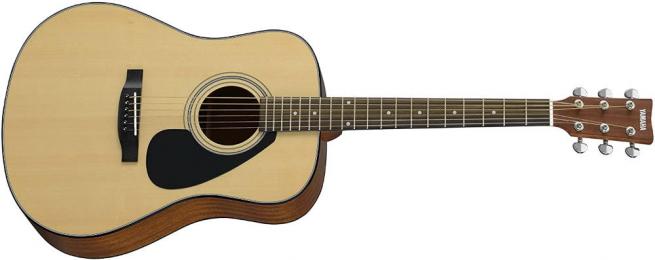
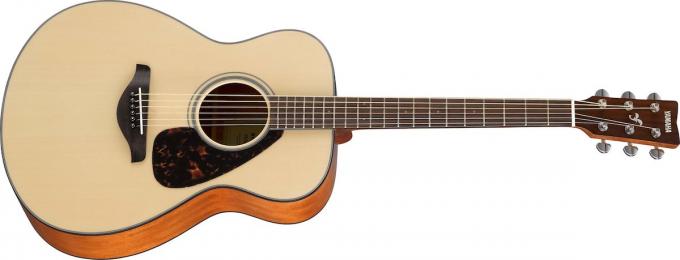
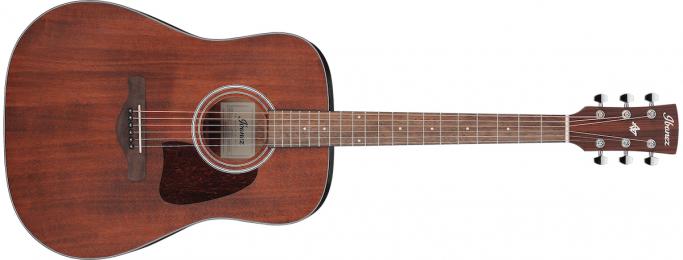

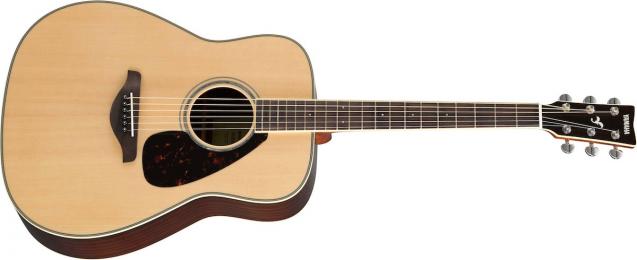
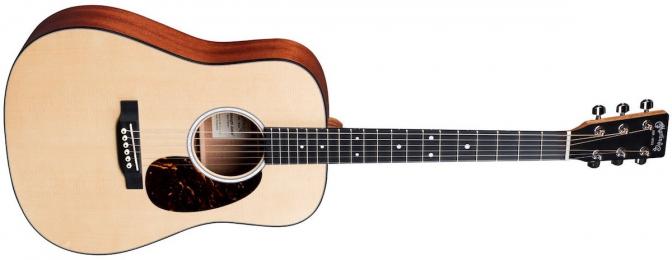

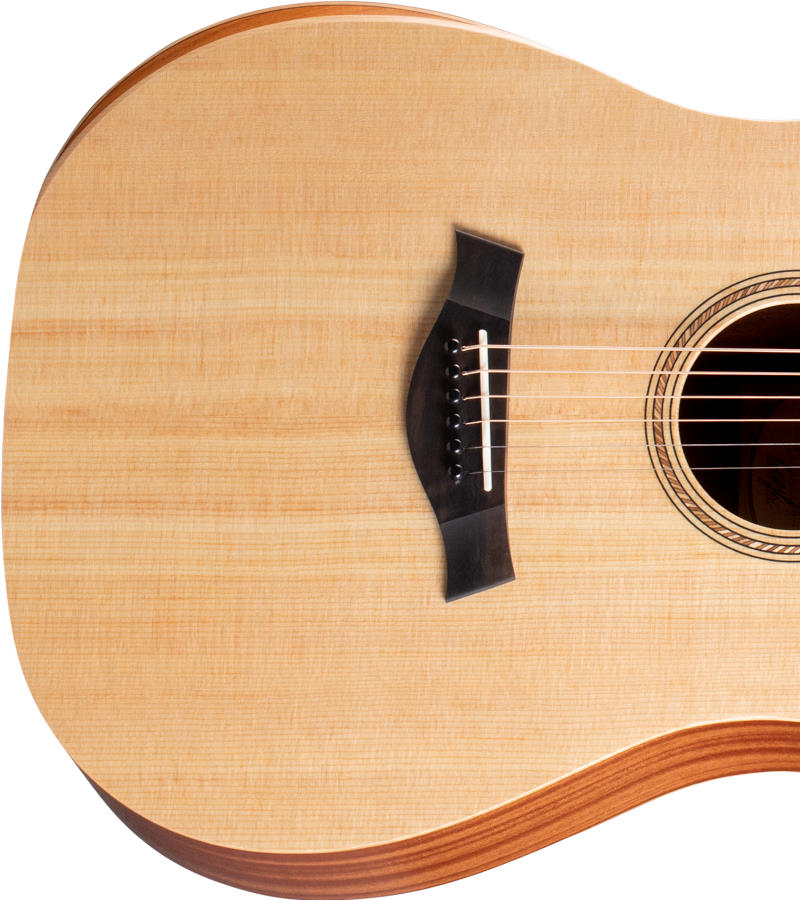
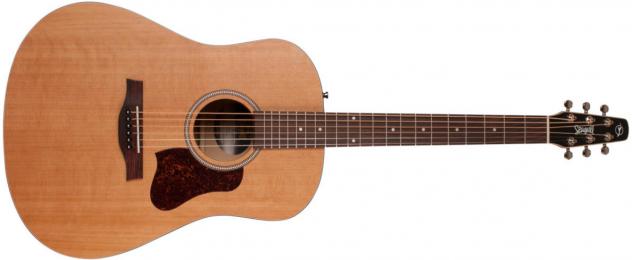
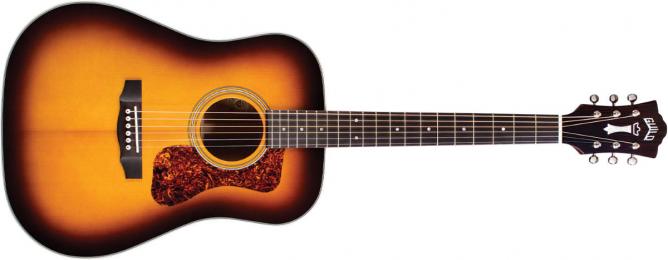
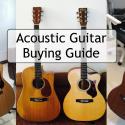
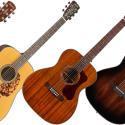
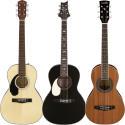
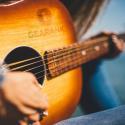


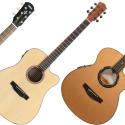
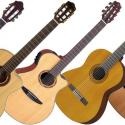
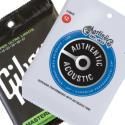
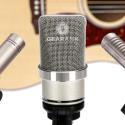
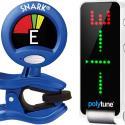
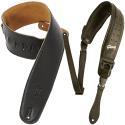
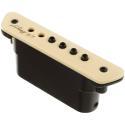
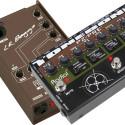
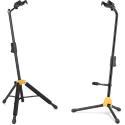
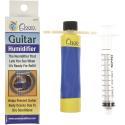
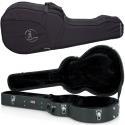
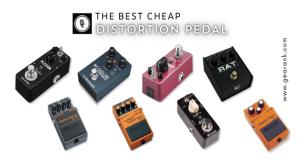

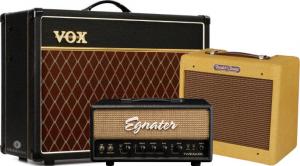
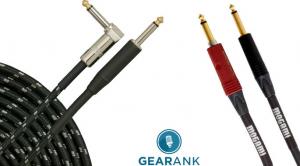
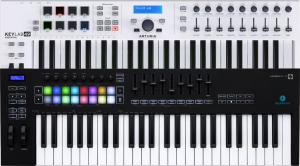
Comments
The following guitars came
Submitted by Jason Horton on
The following guitars came off our recommended list when we published the September 2022 Edition:
Publication of our March 2022
Submitted by Jason Horton on
Publication of our March 2022 Edition resulted in the following guitars coming off the recommended list above, but you can still see our analysis of them:
We have removed the Guild DS
Submitted by Jason Horton on
We have removed the Guild DS-240 Memoir due to a price increase that put it above the $500 price limit for the section it originally qualified for.
Publication of our August
Submitted by Jason Horton on
Publication of our August 2021 Edition resulted in the following guitars being removed from the recommended list above, but you can still see our analysis of them:
The following guitars came
Submitted by Jason Horton on
The following guitars came off our recommended list above as part of our September 2020 update, but you can still read our analysis of them:
We've removed a guitar from
Submitted by Jason Horton on
We've removed a guitar from the recommended list above due to being discontinued, but you can still read what we have to say about it: Washburn Harvest Series D7S.
As a result of the September
Submitted by Jason Horton on
As a result of the September 2019 update to this guide the following guitars came off the recommended list above, but you can still read our analysis of them:
Surprised you haven't
Submitted by Mike Harwood (not verified) on
Surprised you haven't included the Fender Paramount PM-3 Limited Adirondack 000 Rosewood in your over $1000 priced guitars? I'm really impressed with the tone and build quality of these guitars.
That's an Acoustic-Electric
Submitted by Jason Horton on
That's an Acoustic-Electric guitar and so wasn't eligible to be selected for this guide.
The Seagull SWS you have
Submitted by Vincent Masson (not verified) on
The Seagull SWS you have listed has 21 frets. I first humbly checked my two Seagulls and the image you provided and sure'nuff all three have 21 frets. It would suck if a prospective buyer sees it's specs listed here and not bother to look at the image.
Thank you Vincent, there was
Submitted by Jason Horton on
Thank you Vincent, there was a typographical error which I've now fixed thanks to you.
Where would you rank an
Submitted by George (not verified) on
Where would you rank an Augustino Loprinzi acoustic from late 70's to early 80's?
We only provide ratings for
Submitted by Jason Horton on
We only provide ratings for music gear and instruments that are currently available new so we can't really help you with that request.
As part of today's update to
Submitted by Jason Horton on
As part of today's update to this guide we have removed our recommendation of the Epiphone PR-150 due to a lack of availability and replaced it with the now equally highly rated Epiphone DR-100.
As a result of the January
Submitted by Jason Horton on
As a result of the January 2018 update of this guide the following guitars were removed from our recommended list above, either because there were more highly rated options to recommend in the case of acoustic guitars which hadn't been discontinued, or because they were acoustic-electric guitars which we are no longer featuring in this guide:
We have removed the Fender CD
Submitted by Jason Horton on
We have removed the Fender CD-60 All Mahogany from our recommendations above because it has been discontinued.
We have updated this guide by
Submitted by Jason Horton on
We have updated this guide by moving the sections on Acoustic-Electric guitars to a new guide: The Best Acoustic Electric Guitars - Up to $500.
You can still read what we have to say about the guitars removed from this guide:
I have an Enquiry , I am
Submitted by Mark (not verified) on
I have an Enquiry , I am looking to buy a semi-acoustic guitar with a cutaway , I have heard that the Richwood Acoustic D-40CE is a better overall guitar than the EPIPHONE EJ-200CE NAT do you reckon that´s true ? Thanks.
The Richwood Acoustic D-40-CE
Submitted by Jason Horton on
The Richwood Acoustic D-40-CE doesn't meet our criterion as a guitar widely available in the USA so we haven't rated it - maybe someone else more familiar with European brands can help you.